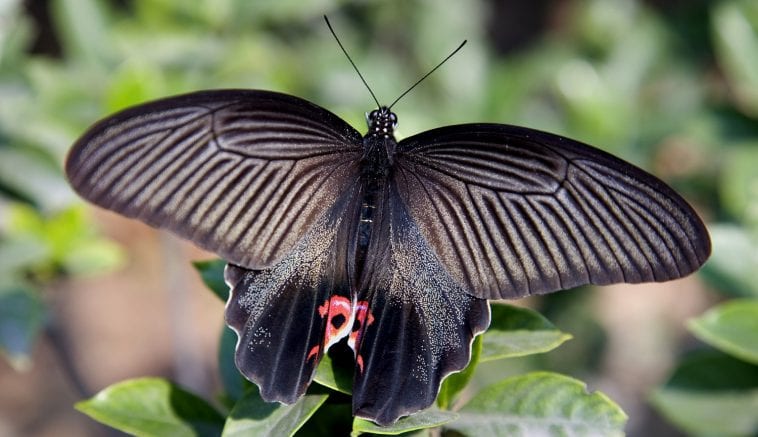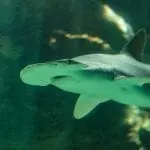[Originally published on the research news page: Thank God for Insects]
Wasp egg-laying organ inspires new tool to reduce trauma in minimally invasive surgery
[Editor’s notes: While this research is exciting on many levels, the starting point tells us something the secular world doesn’t want to admit they can safely rely on. They knew before they started to expect “a clever mechanical solution.”]
Clever: 1a: quick to understand, learn, and devise or apply ideas; intelligent
b: skilled at doing or achieving something; talented:
c: showing intelligence or skill; ingenious: ~Oxford Dictionaries
“A new tissue-transport device which was inspired by the egg-laying organs of parasitic wasps could greatly advance the field of minimally invasive surgery (MIS), according to a new study in Frontiers in Bioengineering and Biotechnology.
“The prototype, developed by researchers at Delft University of Technology in the Netherlands, could allow MIS techniques to be used in previously hard-to-reach areas of the body and vastly reduce the trauma from surgery, and therefore recovery time, of patients…
‘The wasp ovipositor is so thin that it can’t actually fit any muscles within it, so we knew it was a clever mechanical solution worth studying to see if we could recreate it,’ explains lead author Dr. Aimée Sakes of the Bio-Inspired Technology Group at Delft University of Technology, led by Prof Dr. Paul Breedveld.” ~Medicalxpress.com
New study sheds light on how mosquitoes wing it
[Did they just mention the insect’s solution is “clever” again?]
“Mosquitoes’ abnormally long, narrow wings and distinctive flight behaviour set them apart from other insects. Not only that, but when flapped, these wings move back and forth approximately 800 times each second – far faster than any other insect of comparable size…In addition to generating lift by leading-edge vortices, which are rotational, bubbles of low pressure created along the edge of the wing, mosquitoes use two novel aerodynamic mechanisms to make them fly; trailing edge vortices and rotational drag…
The usual flapping pattern of short, fast sweeps means that mosquitoes cannot rely on conventional aerodynamic mechanisms that most insects and helicopters use. Instead, we predicted that they must make use of clever tricks as the wings reverse their direction at the end of each half-stroke. ~Lead researcher: Dr Richard Bomphrey of the Royal Veterinary College
“Understanding the mechanisms that enable mosquitoes and other flying insects to fly in their unique way, could support the development of aerodynamic innovations such as tiny scale flying tech, like piezoelectric actuators.” ~University of Oxford
Why is it so hard to squash a cockroach?
[So they are “not simple, linear hinges,” then? Perhaps they are complex, well thought out machines. Oh, and…
Tactic: an action or strategy carefully planned to achieve a specific end ~Oxford Dictionary
Since when did “Nature” carefully prepare a strategy in advance like this? How much more fitting to give the credit to this living creature’s actual designer, God.]
“By mimicking the combination of rigid and flexible parts that gives insect exoskeletons and wings their resilience, biomechanicists are making robots tougher. ‘Bend but not break is a lot of what happens in these insects,’ says Harvard University roboticist Robert Wood. ‘We’re trying the same thing to see if we can have similar robustness in our robots.’
Until recently, most engineers designed for a tough-and-tumble world by making machines stiff and sturdy or agile enough to avoid danger…
Nature has come up with a tactic that we don’t have. Crumple … and then keep on going. ~David Hu, mechanical engineer at Georgia Institute of Technology in Atlanta.
Both the roach exoskeleton and the insect wings are inspiring robot design… [scientists are joining forces] to refit hinged wings to an insect-sized flying robot called Robobee.
Designing [it] was not trivial; they are not simple, linear hinges,
Mountcastle said at the Portland meeting. The group hopes to begin testing the new design in the real world by spring. Hu applauds the insect-inspired designs.” ~Science Magazine
Black butterfly wings offer a model for better solar cells
Architecture: 1: the art or practice of designing and constructing buildings:
2a: the complex or carefully designed structure of something: “the chemical architecture of the human brain” ~Oxford DictionariesDesign: 1b: the art or action of conceiving of and producing a plan or drawing. ~Oxford Dictionaries
“A team of researchers with California Institute of Technology and the Karlsruh Institute of Technology has improved the efficiency of thin film solar cells by mimicking the architecture of rose butterfly wings.
“In their paper published in the journal Science Advances, the group explains their inspiration for studying the butterfly wings and the details of their improved solar cells… Intrigued by the butterfly design, the researchers created similar structures in their lab using sheets of hydrogenated amorphous silicon sheets… The design, the team found, allowed for picking up roughly twice as much light as previous designs.” Phys.org







